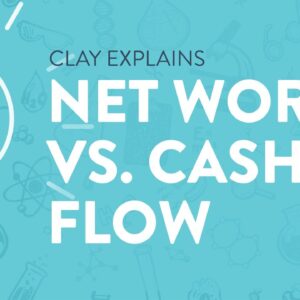
Outline:

- Introduction: Why Strategic Wealth-Building Matters for Gen Z
- The Economic Reality Gen Z Faces
- From Surviving to Thriving: A Mindset Shift
- Phase 1 – Foundation: Financial Literacy and Discipline
- Why Financial Education Is Your Superpower
- Building a Budgeting System That Works
- Tools for Tracking and Planning Finances
- Phase 2 – Stability: Eliminate Toxic Debt
- The Real Cost of Credit Card Debt
- Debt Avalanche vs. Snowball: Which Works for Gen Z?
- Use Automation to Stay Consistent
- Phase 3 – Growth: Establishing Multiple Streams of Income
- Freelancing, Side Hustles, and Gig Economy Insights
- Investing in Skill Acquisition for Future-Proof Careers
- Monetizing Passions through Digital Assets
- Phase 4 – Investment: Building Long-Term Wealth Vehicles
- Stock Market Basics for Gen Z
- Crypto, ETFs, and Index Funds Explained Simply
- Real Estate Investment for Beginners
- Phase 5 – Protection: Insurance, Emergency Funds & Legal Prep
- Why Emergency Funds Matter More Than Ever
- The Role of Insurance in Wealth Preservation
- Start Early with Estate Planning & Legal Literacy
- Phase 6 – Automation: Systemizing Your Money
- Smart Budgeting Apps Gen Z Loves (e.g., YNAB, Monarch)
- Passive Investing with Robo-Advisors
- Auto Transfers and Pay-Yourself-First Strategy
- Phase 7 – Optimization: Tax Planning and Financial Efficiency
- Tax-Advantaged Accounts (Roth IRA, HSA)
- Tracking Deductions as a Freelancer or Creator
- Using AI Tools for Real-Time Tax Optimization
- Phase 8 – Generational Wealth: Leaving a Legacy
- Setting Up Trusts and Investments for Future Kids
- Teaching Financial Values to Your Circle
- Digital Inheritance and Asset Transfers
- The Digital Toolbox: Must-Have Apps, Platforms, and Resources
- How Gen Z Can Thrive Despite Economic Disruption
- Embracing Resilience and Long-Term Thinking
- Leveraging Technology to Bridge Wealth Gaps
- The Power of Community and Financial Accountability
- Red Flags to Avoid on the Wealth-Building Journey
- Conclusion: You Don’t Have to Be Rich to Build Wealth
- FAQs
- How much should Gen Z save monthly?
- What’s the best investment for a 20-something beginner?
- Should I pay off student loans or invest first?
- How can I earn passive income with little money?
- Are budgeting apps safe and effective?
Strategic Wealth-Building for Gen Z: A Multi-Phase Blueprint to Achieve Financial Freedom in the Age of Economic Disruption
Introduction: Why Strategic Wealth-Building Matters for Gen Z
Strategic wealth-building for Gen Z isn’t just a financial concept—it’s a survival strategy in today’s economy. Inflation, automation, gig work, and global uncertainty have redefined what it means to be financially secure.
But here’s the twist: Gen Z isn’t just facing challenges—they’re uniquely positioned to thrive by adopting tech-savvy, value-driven approaches to wealth.
You don’t need to earn six figures to build wealth—you just need a blueprint, a plan, and the right tools.
Phase 1 – Foundation: Financial Literacy and Discipline
Why Financial Education Is Your Superpower
Let’s face it—school never taught you how to manage a credit card or build a budget. But in this digital age, financial literacy is a Google search away.
Start by reading content from trusted sources like Investopedia, NerdWallet, and personal finance YouTube creators.
Knowledge is your greatest asset—use it to gain control, not just survive.
Building a Budgeting System That Works
Forget rigid spreadsheets. Use apps like YNAB, Cleo, or Monarch Money that help automate and track spending in real-time.
Your budget isn’t a cage—it’s your freedom plan.
Tools for Tracking and Planning Finances
- Mint – for basic tracking
- Monarch Money – for goal-based planning
- Rocket Money – to find and kill wasteful subscriptions
Phase 2 – Stability: Eliminate Toxic Debt
The Real Cost of Credit Card Debt
A $1,000 balance at 20% APR can cost over $200 a year if unpaid. Gen Z must attack high-interest debt early.
Debt Avalanche vs. Snowball: Which Works for Gen Z?
- Avalanche: Pay high-interest debts first.
- Snowball: Pay smallest balances first to build momentum.
Pick what keeps you consistent. Use platforms like Tally to automate payments.
Use Automation to Stay Consistent
Set up auto-payments to avoid fees and build your credit score painlessly.
Phase 3 – Growth: Establishing Multiple Streams of Income
Freelancing, Side Hustles, and Gig Economy Insights
From freelance writing to TikTok content creation, Gen Z is already redefining work. Use platforms like:
- Fiverr
- Upwork
- Canva Creators Program
- Affiliate platforms like Impact.com
Investing in Skill Acquisition for Future-Proof Careers
Learn high-income skills: coding, UX design, AI prompt engineering, content strategy. Platforms like Coursera or LinkedIn Learning offer budget-friendly courses.
Monetizing Passions through Digital Assets
Launch a Notion template, sell an eBook, or build a Gumroad store—the barriers to entry are gone.
Phase 4 – Investment: Building Long-Term Wealth Vehicles
Stock Market Basics for Gen Z
Start small with fractional shares using Robinhood, Public, or Fidelity. Learn the difference between stocks, bonds, and ETFs.
Crypto, ETFs, and Index Funds Explained Simply
- ETFs: Low-cost, diversified investments
- Index Funds: Like ETFs but passive and stable
- Crypto: High-risk, high-reward—don’t bet your rent money
Real Estate Investment for Beginners
Explore REITs (Real Estate Investment Trusts) or real estate crowdfunding platforms like Fundrise.
Phase 5 – Protection: Insurance, Emergency Funds & Legal Prep
Why Emergency Funds Matter More Than Ever
3–6 months of expenses in a high-yield savings account (like SoFi) gives you peace of mind.
The Role of Insurance in Wealth Preservation
Don’t overlook:
- Health insurance
- Renters or homeowners insurance
- Term life insurance (yes, even in your 20s)
Start Early with Estate Planning & Legal Literacy
Use FreeWill or Trust & Will to set up basic legal docs. Your digital assets deserve protection too.
Phase 6 – Automation: Systemizing Your Money
Smart Budgeting Apps Gen Z Loves
- YNAB – For intentional spending
- Rocket Money – For expense tracking
- Cleo – For AI-powered sass and advice
Passive Investing with Robo-Advisors
Platforms like Betterment and Wealthfront build and manage portfolios automatically based on your risk appetite.
Auto Transfers and Pay-Yourself-First Strategy
Automate savings and investment as soon as you get paid. Make wealth-building as passive as scrolling TikTok.
Phase 7 – Optimization: Tax Planning and Financial Efficiency
Tax-Advantaged Accounts (Roth IRA, HSA)
Open a Roth IRA in your early 20s and your future self will thank you. Earnings grow tax-free.
Tracking Deductions as a Freelancer or Creator
Use QuickBooks Self-Employed, Bonsai, or Notion finance templates to track income and write-offs.
Using AI Tools for Real-Time Tax Optimization
Tools like April Tax and Keeper Tax offer real-time tax coaching powered by AI.
Phase 8 – Generational Wealth: Leaving a Legacy
Setting Up Trusts and Investments for Future Kids
Don’t wait until you’re rich—start early with compound interest and simple custodial accounts.
Teaching Financial Values to Your Circle
Wealth isn’t just what you earn—it’s what you teach. Share your knowledge and elevate others.
Digital Inheritance and Asset Transfers
Use tools like GoodTrust to manage your digital legacy.
The Digital Toolbox: Must-Have Apps, Platforms, and Resources
- Budgeting: YNAB, Monarch, Rocket Money
- Investing: Public, M1 Finance, Betterment
- Side Hustles: Gumroad, Fiverr, Canva
- Learning: Coursera, Skillshare, Udemy
- Security: 1Password, Experian, Credit Karma
How Gen Z Can Thrive Despite Economic Disruption
Gen Z is more connected, more aware, and more resourceful than any previous generation. With the right tools and strategies, financial freedom is not a fantasy—it’s a formula.
The Power of Community and Financial Accountability
When it comes to building wealth, there’s one secret weapon that Gen Z often underestimates: community.
Wealth-building is a long game, and playing it alone can feel exhausting. That’s why surrounding yourself with a supportive, like-minded financial team can be the difference between quitting halfway or reaching your goals with confidence.
Let’s unpack why community and financial accountability are game-changers for Gen Z in the age of economic disruption.
1. You Learn Faster When You Learn Together
Being part of a financial community means you get:
- Real-time tips from people walking the same road
- Honest feedback on your budget, side hustle, or investment strategy
- Exposure to tools, ideas, and opportunities you might never discover alone
Whether it’s a Reddit thread like r/personalfinance, a YouTube channel with monthly budget breakdowns, or a Discord server for freelancers—learning is faster, more relatable, and way less intimidating in a group setting.
2. Accountability Keeps You Consistent
Let’s be honest—self-discipline is tough. Especially when the dopamine hit of online shopping or eating out “just this once” tempts you off your financial path.
That’s where accountability partners or groups come in:
- They check in on your goals
- Celebrate your wins (like paying off your first credit card!)
- Call you out gently when you’re slipping
💡 Pro tip: Start a “Money Monday” check-in group with a few friends where you review weekly expenses, savings progress, or share a finance win.
3. Shared Experiences Help You Feel Less Alone
Money shame is real. Many Gen Zers feel embarrassed about debt, under-earning, or bad money habits—so they suffer in silence.
But when you join a judgment-free community, you realize:
- Everyone is learning.
- Most people are figuring it out as they go.
- Your mistakes don’t define your future.
There’s something deeply healing about hearing, “I’ve been there too.”
4. Peer Motivation Fuels Your Progress
When you see someone your age saving $5,000 in a year, launching a side hustle, or buying their first ETF—you realize: “Wait, I can do that too.”
Peer progress inspires personal progress.
In community, success becomes contagious—and it feels more achievable than watching a millionaire influencer flaunt cars and cash online.
5. Communities Share Resources and Opportunities
Here’s where things get practical.
The right financial community will:
- Drop links to grants, scholarships, and remote jobs
- Recommend budgeting templates, tax-saving tools, and investment apps
- Offer exclusive masterclasses, eBooks, or discounted finance courses
It’s not just support—it’s strategy-sharing.
You rise faster when people ahead of you hold the ladder.
Where to Find or Build Your Wealth Community
- Reddit: r/personalfinance, r/financialindependence, r/fatFIRE
- YouTube: Join comment threads under creators like Erin Talks Money, Andrei Jikh, or Graham Stephan
- Facebook Groups: Try “Her First $100K” or “Clever Girl Finance”
- Discord Servers: Many content creators now offer free money-focused servers
- Apps: Some platforms like Monarch Money now offer community features for shared finance goals
Don’t just consume—engage. Comment, share your progress, ask questions.
Build a Culture of Wealth Together
The biggest lie we’ve been told is that money is a solo game. But the truth is, wealth thrives in community. It grows when people share knowledge. It multiplies when friends build side hustles together. It lasts when families pass on values—not just valuables.
You don’t need to be the smartest or richest in the room. You just need to be surrounded by people who won’t let you quit.
In a world full of economic noise, community is your compass. And accountability is your anchor.
So don’t just stack money—stack people who believe in your goals.
Red Flags to Avoid on the Wealth-Building Journey
Wealth-building isn’t just about doing the right things—it’s also about avoiding the wrong ones. Many Gen Zers fall into avoidable traps that delay their progress, drain their savings, or sabotage their future. These red flags may seem small at first, but left unchecked, they can derail years of financial progress.
Here’s a breakdown of the most common red flags to avoid—and how to outsmart them.
1. Chasing “Get Rich Quick” Schemes
Whether it’s a viral TikTok crypto coin, a drop-shipping course that promises $10K a week, or a sketchy “passive income hack” that requires upfront payment—it’s probably too good to be true.
💡 Solution: If it promises instant wealth, run. Instead, focus on slow, proven growth methods like ETFs, real estate, content creation, and skill development. Wealth is a marathon, not a microwave.
2. Lifestyle Inflation (a.k.a. Spending More When You Earn More)
Got your first raise or freelance windfall? Great. But if you immediately upgraded your phone, wardrobe, and car—you’re building expenses, not wealth.
💡 Solution: Stick to your budget. Use increases in income to boost your savings, investments, or pay down debt, not inflate your lifestyle.
3. Ignoring High-Interest Debt
Some Gen Zers feel they can “ignore” credit card debt while investing. But if your investments earn 8% and your credit card interest is 26%, you’re literally losing money.
💡 Solution: Prioritize debt with interest rates above 8–10% before going all-in on investing. Use apps like Tally or Rocket Money to stay on track.
4. Not Having an Emergency Fund
A single unexpected event—job loss, health emergency, or broken laptop—can wipe out your budget and force you into debt.
💡 Solution: Set aside 3–6 months of expenses in a high-yield savings account like SoFi or Ally Bank. Even $500 can soften a blow.
5. Failing to Track Your Spending
You can’t improve what you don’t measure. Swiping away blindly leads to overdrafts, missed bills, and overspending.
💡 Solution: Use budgeting apps like Monarch Money, YNAB, or Cleo to track every dollar. Get weekly spending summaries. Awareness is power.
6. Putting Off Investing “Until You Make More Money”
The longer you wait to invest, the more compound interest you miss. Waiting for the “perfect” time to start is the biggest wealth killer.
💡 Solution: Start small. Even $10 a week in a Roth IRA or ETF can grow substantially over time. Use platforms like Public, Robinhood, or Fidelity Spire.
7. Investing Without Understanding
Jumping into stocks, crypto, or NFTs because someone online said “it’s going to the moon” is a quick way to crash and burn.
💡 Solution: Study first. Invest second. Follow experts like Graham Stephan or read guides on Investopedia. Never risk money you can’t afford to lose.
8. FOMO Spending & Peer Pressure
Social media is a highlight reel. Don’t bankrupt yourself trying to keep up with someone’s fake lifestyle.
💡 Solution: Define your own version of wealth. Is it peace of mind? A paid-off car? A travel fund? Set financial goals that matter to you, not Instagram.
9. Skipping Insurance to “Save Money”
Accidents happen. And when they do, lack of insurance can wipe out years of savings in a flash.
💡 Solution: Get basic health, renter’s, or auto insurance. And if you have dependents or major assets, consider term life insurance.
10. Not Asking for Help
Too many people struggle financially in silence, thinking they’re the only one. But truthfully, most people aren’t taught how to manage money.
💡 Solution: Talk to a trusted mentor. Follow financial communities on Reddit or YouTube. Take a course. Asking for help is a power move—not a weakness.
Bottom Line: Wealth Has Traps—But You Can Outsmart Them
You don’t need to be perfect, but you do need to be intentional. If you avoid these red flags and keep stacking smart decisions, you’ll be miles ahead of most of your peers.
It’s not just about making more money—it’s about making fewer costly mistakes.
Conclusion: You Don’t Have to Be Rich to Build Wealth
In an era defined by economic disruption, inflation, rising rent, and volatile job markets, it’s easy to feel like wealth-building is out of reach for Gen Z. But here’s the truth: you have more power, access, and tools at your fingertips than any generation before you. You are digitally native. Financially curious. Entrepreneurial by default. You just need a clear blueprint—and the willingness to take one small step at a time.
Each phase of the wealth-building strategy outlined in this article—whether it’s eliminating debt, investing early, automating your savings, or creating multiple income streams—is not just theory. It’s a roadmap that has already worked for thousands of Gen Zers who’ve decided to stop reacting to money and start commanding it.
Start where you are.
- Don’t let the noise of the economy drown out your progress.
- Don’t compare your beginning to someone else’s middle.
- And definitely don’t wait for “more money” to start your journey—start building the habits now.
The ultimate flex? Not flashy designer stuff. It’s waking up with zero debt, money in the bank, and the freedom to live life on your own terms.
You don’t need a perfect start—you just need to start. And with every smart financial decision you make today, you’re building not just wealth, but generational power.
Because financial freedom isn’t just about you—it’s about the impact you create, the doors you open, and the legacy you leave behind.
You just need to be intentional. With a multi-phase strategy, smart tools, and an empowered mindset, Gen Z can own their financial future—even in an unstable economy.
Start now. Start small. Just don’t stay stuck.
FAQs
1. How much should Gen Z save monthly?
Aim to save at least 20% of your income. If that feels high, start with 10% and build up. Use automation to make it effortless.
2. What’s the best investment for a 20-something beginner?
A diversified ETF via a Roth IRA is an excellent start—low risk, low fees, and long-term growth.
3. Should I pay off student loans or invest first?
If the interest is high (>6%), prioritize debt. If it’s low and manageable, balance both.
4. How can I earn passive income with little money?
Start with content creation (eBooks, templates), micro-investing apps, or affiliate marketing programs.
5. Are budgeting apps safe and effective?
Yes—most use bank-grade encryption and API integrations like Plaid for secure access. Always read privacy policies.







